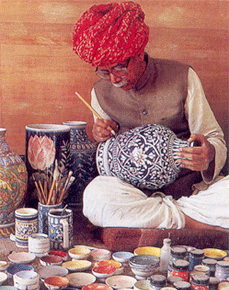Did you know that Jaipur has its own private pot party throughout the year? Don’t get surprised because the pot party being referred to here is the art of Blue ‘Pottery’. This special skill was originally acquired from the Persians which then travelled to Delhi during the Mughal era. The feature that makes it so distinctive is the beautiful blue dye with which it is painted.
The city has been recognized as the major purveyor of this unique kind of skill as it vanished from the country except Jaipur due to it being more expensive and complex. Historical accounts state that in the 19th century, Sawai Ram Singh II, the ruler of the city then, obtained the fine art of blue pottery by sending off his craftsmen to the capital (Delhi).
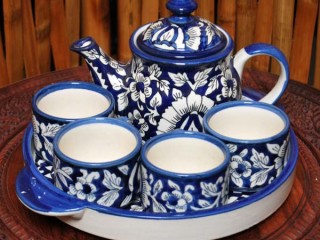 Unlike clay pottery which is simpler and uses clay to form the body, the artisans that specialize in this artwork make use of Fuller’s earth, also called Multani Mitti, and other ingredients that forms a particular mixture, known as the ‘Egyptian paste’. The making of Blue Pottery involves a lot of stages but to describe it in an easier way, it would be best to broaden it into four phases.
Unlike clay pottery which is simpler and uses clay to form the body, the artisans that specialize in this artwork make use of Fuller’s earth, also called Multani Mitti, and other ingredients that forms a particular mixture, known as the ‘Egyptian paste’. The making of Blue Pottery involves a lot of stages but to describe it in an easier way, it would be best to broaden it into four phases.
The first phase involves the formation of the pottery. It requires the grinding of elements like Fuller’s earth, gum (extracted from Banyan tree) and quartz. The powder is then measured accordingly to prepare dough by mixing it with water and kneading it. It is then shaped into discs, like tortillas, and the edges are smoothened, after which it is set in a mould and filled with ash. The pottery is subsequently layered with a paste that constitutes flour and glass.
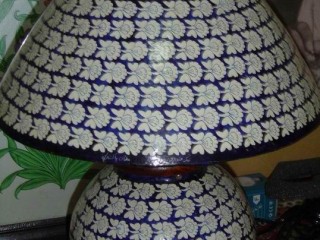
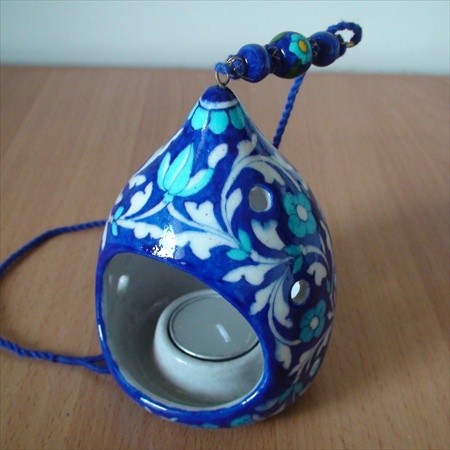
The second step is all about the designing which is done by the potter’s wheel. The desired colors are grinded and combined with gum that is usually made of Babool. The model is then covered with the resultant color.
The most important stage is that of glazing the pottery. The components of the glaze contain glass, zinc oxide, boric acid, potassium nitrate and borax. This mixture is warmed up to get a molten glaze which comes together as lumps when it cools down. This is powdered and is then spread over the sculpt following which it would be fired.
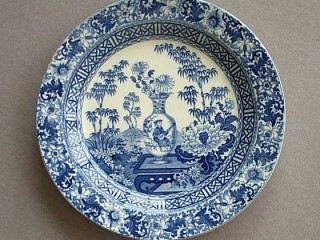
Finally, the kiln is made ready and the mold is then positioned on it. The kiln is then heated up to 800 degrees or more for four to five hours. The process of cooling it down takes two to three days after which the product is removed and is ready after some finishing touches.
This complicated but beautiful pottery is generally adorned with patterns of leaves, animals and birds. In the ancient times, the blue glazed items designs were a considerable part of not only decorative items but also the building structure. From ashtrays to vases, there is a wide variety of pieces that you can find in this kind. Usually, you will find tea sets with the intricate blue pottery artwork apart from other sort of cutlery.
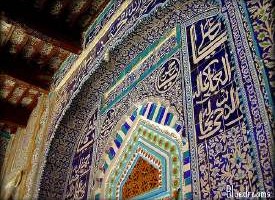
The place to go to find Blue pottery products would be the ‘Jaipur Blue Pottery Art Center’ at Amer Road near Jal Mahal. Other stores where you can buy it is at ‘Kuber Handicraft’ located at MI Road and ‘Neerja International Inc’ situated in Civil Lines on Bhawani Singh Road. It doesn’t matter if you are a local or a tourist, but if you want something that would keep Pink City in mind like a bolt from the blue, then don’t miss out on the piece of art!


